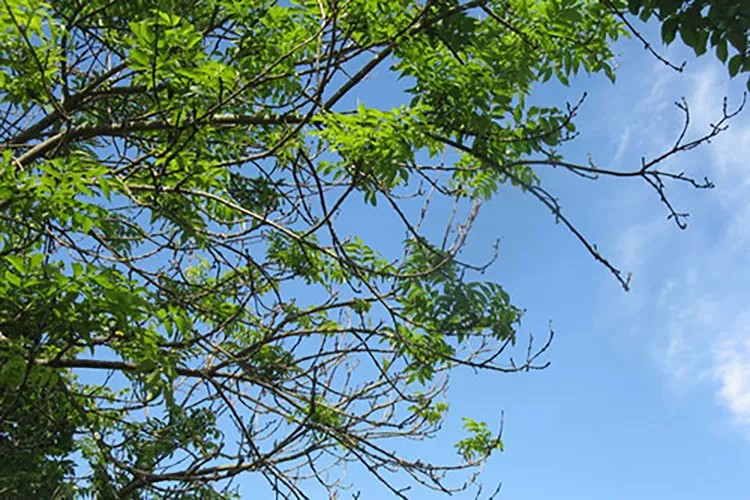Tuesday May 16th 2023

West Lothian Councillors have praised the speed of the work to remove roadside trees suffering from Ash dieback at the start of what could be a 20 year fight against the disease – with more than 40,000 trees identified as being affected.
The felling around Linlithgow is well underway with the A706 recently closed to allow contractors to remove diseased trees.
The programme has now moved on to the A904 and only minor disruption is expected.
At Linlithgow Local Area Committee Councillor Tom Conn said: “I attended a site visit where trees were being cut down off the Lanark road and the machine being used was I have to say a joy to watch cutting the tree down. There’s a claw that grabs what’s going to be cut and a circular saw cuts it through and places it down.”
He said it was a much faster timescale than traditional felling methods and meant road disruption was minimal.
“Clearly the programme is under way but you can see how efficient it is employing contractors with that machinery rather than the traditional methods which would have meant that the A706 would have been closed for a lot longer.
He added: “It’s a joy to watch, not necessarily a tree being cut down, but to actually see the operation. It’s very efficient.”
Councillor Conn add that while the branches might look healthy the inner core of the tree “is actually just pulp.”
“So for people who are not happy about trees being cut down there is a reason, and it’s precautionary.”
The council’s website says that it is estimated there could be 12,000 trees in poor condition and a further 21,000 showing symptoms of Ash dieback which are council owned / managed trees along roads, main paths, school grounds, public open space.
It’s estimated that there another 6,000 on private land which could fall on public roads/footpaths.
In a report to the local area committee Andy Johnston from the NETs Land and Countryside teams said that 130 trees had been planted in the stretch along the A706.
Graeme Struthers, the depute chief executive and lead officer of the committee praised manager Mr Johnston and his team for their work in setting up the programme and working with the contractors: “The council has been at the forefront of trying to deal with Ash dieback as a local authority. Other councils are watching what we are doing and it’s good to hear the feedback from Councillor Conn regarding the demonstration.”
Answering a question from chair Councillor Sally Pattle, Mr Johnston told the committee: “The Ash dieback programme could take as much as 20 years to complete.
“We are looking at the safety critical trees first and that element of the programme is road side trees or trees adjacent to property where if they fail the tree could fall across a road or hit a property or kill or injure someone.”
The initial phase will take three years. A ten year capital programme has been agreed, with the bulk of the money spent in the first few years with fewer resources available as time goes on.
Mr Johnston said: “As we have now entered bird nesting season, staff onsite continue to be vigilant whilst undertaking the operations, furthermore ecological checks have been undertaken in house and where needed an ecologist will be onsite before work commences with appropriate mitigation adopted where necessary.
“ Prior to any tree felling that has been undertaken, ecological checks have been completed to identify potential bat roost features, these were initially carried out in house and where potential sites had been identified, a licenced bat worker was onsite to thoroughly check any features prior to felling.
“Where other protected species such as badgers were identified, exclusion zones were marked out, and trees will be dealt with outside of breeding season under the appropriate licence.”
He concluded: “As areas are completed, each area will be assessed individually for replanting or natural regeneration. Implementation measures will vary by site but could comprise of: single tree specimens replacing individual trees removed, new small groups/roundels consisting of trees and understory shrubs, replacement planting of pockets within wooded areas of trees and/or smaller trees and shrubs.”
The fungus (Hymenoscyphus fraxineus) attaches itself to the leaves of ash trees and spreads through the branches where it blocks the water transport systems, causing leaf loss, lesions in the wood and on the bark. This leads to the gradual dieback of the tree crown. Trees become brittle, with branches breaking off or the whole tree failing. If they are not managed appropriately, trees are at risk of collapsing, presenting an immediate danger to the surrounding area.
Tweet Share on Facebook